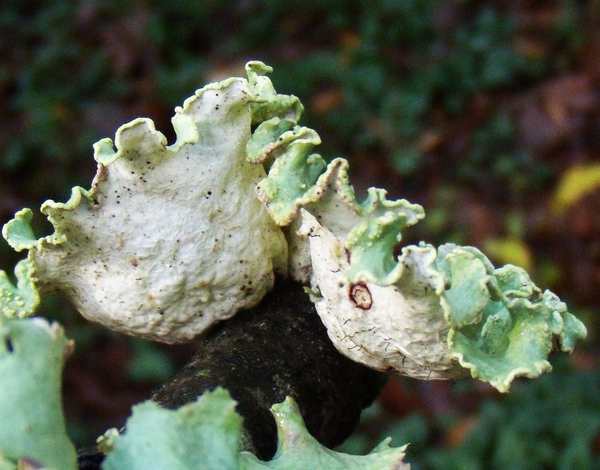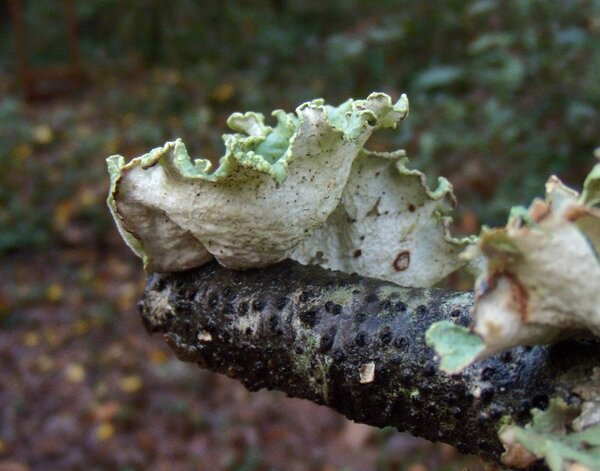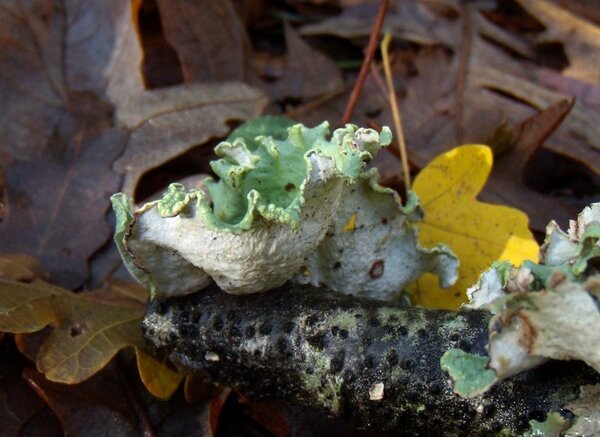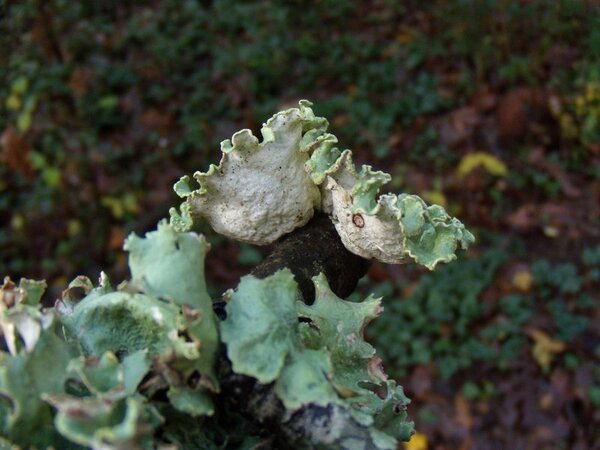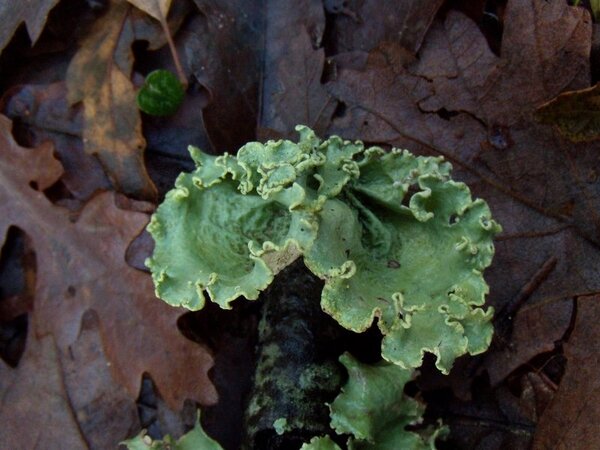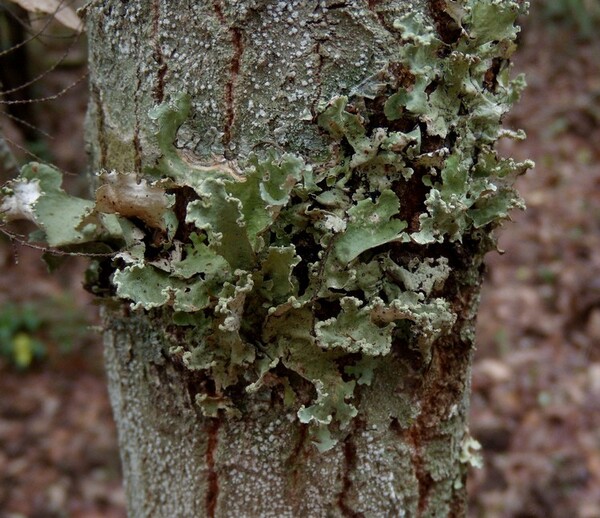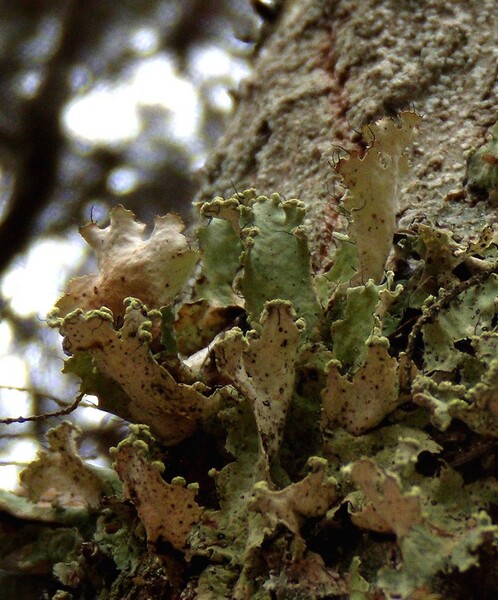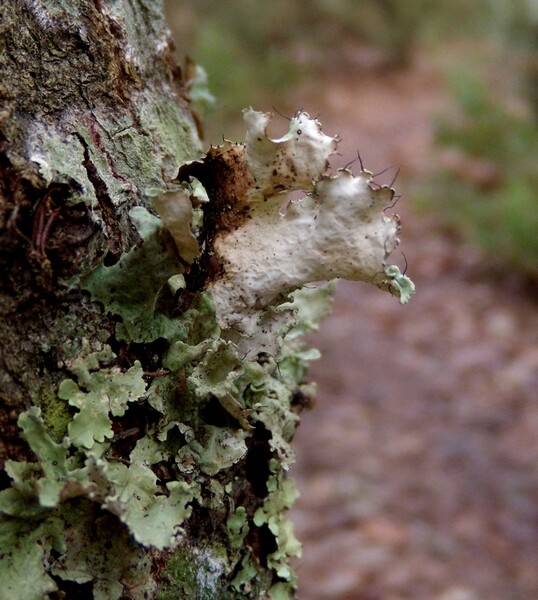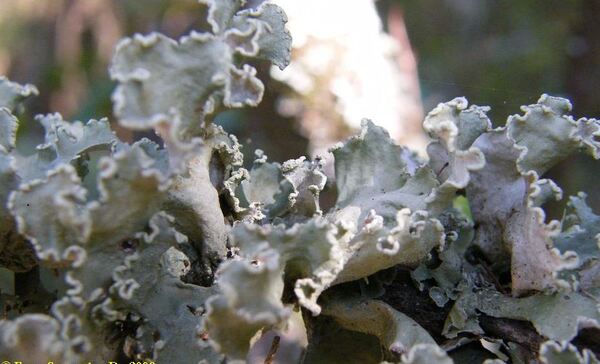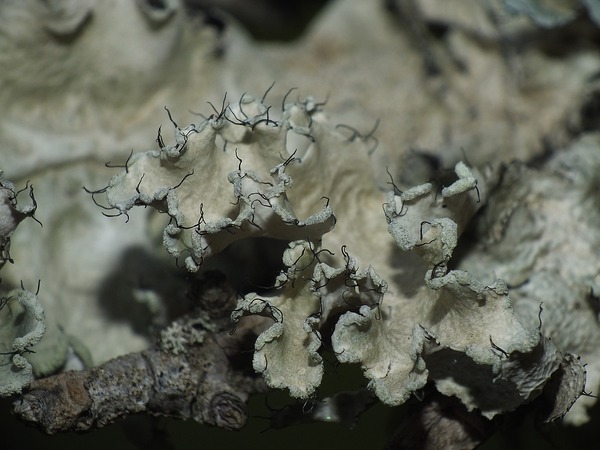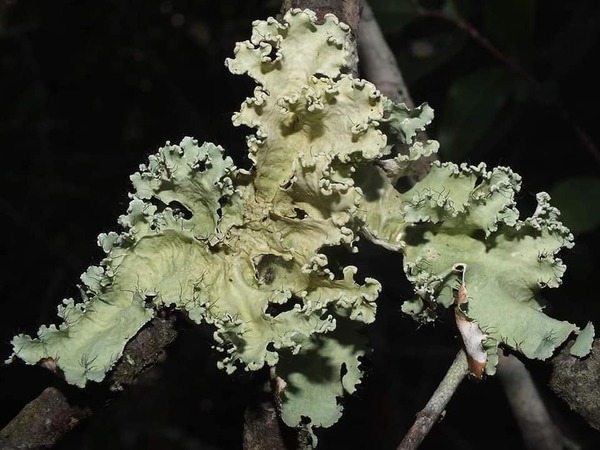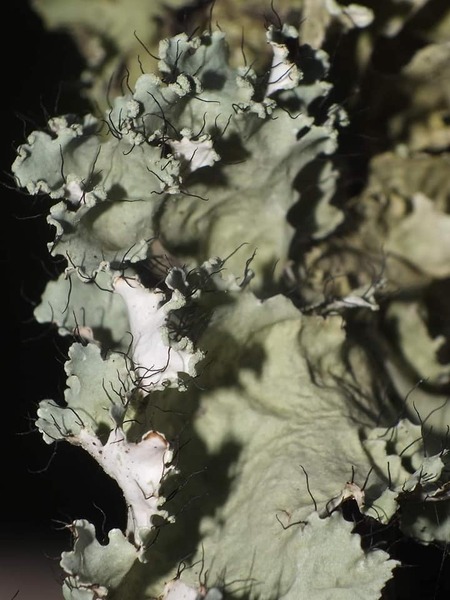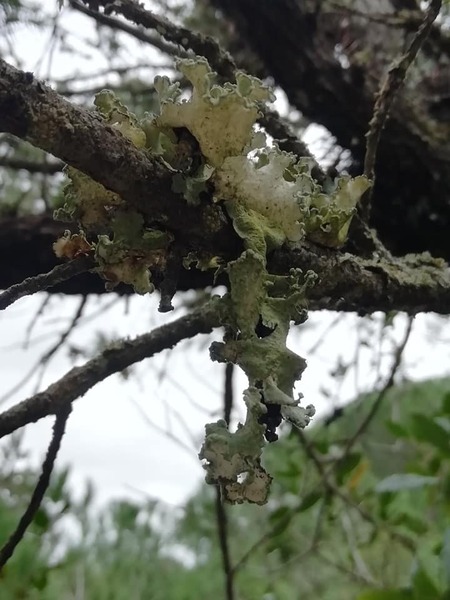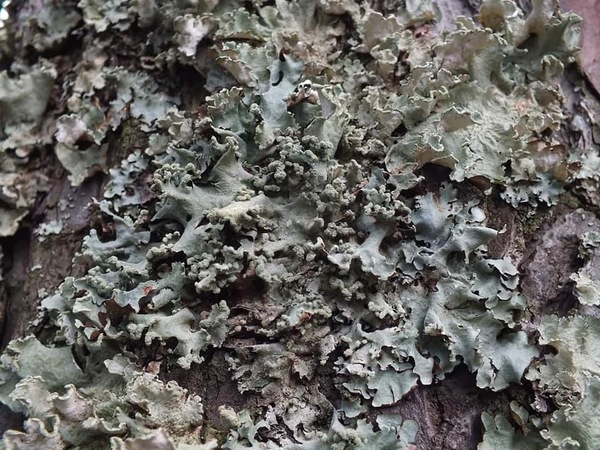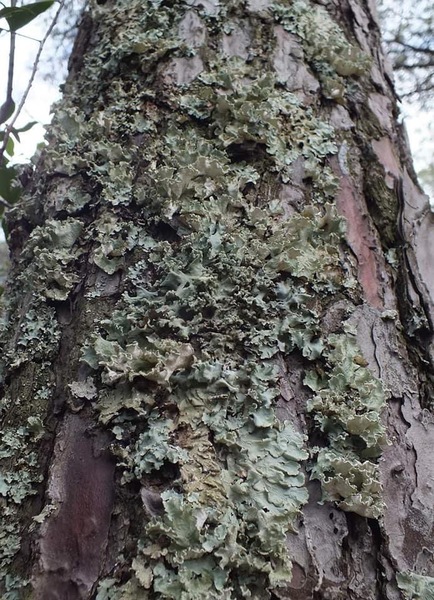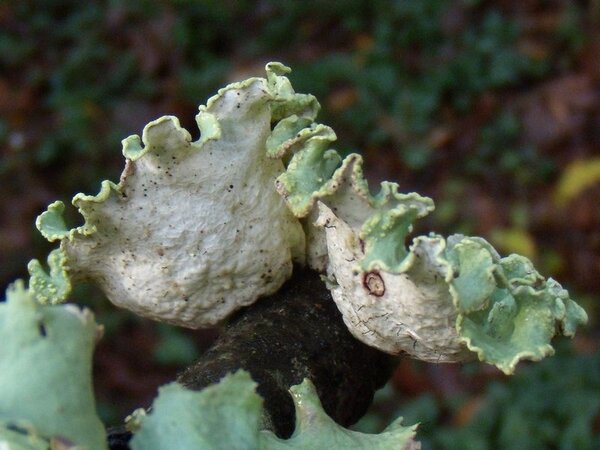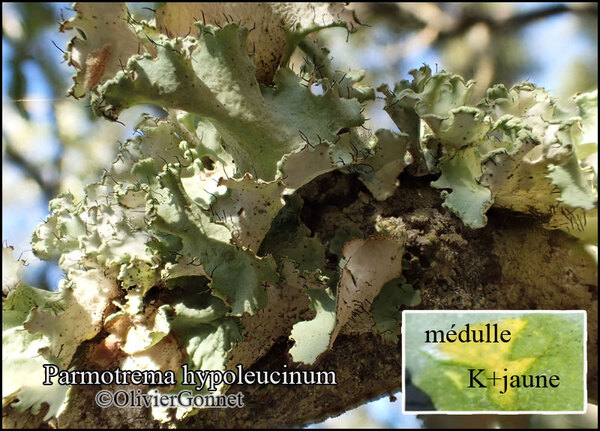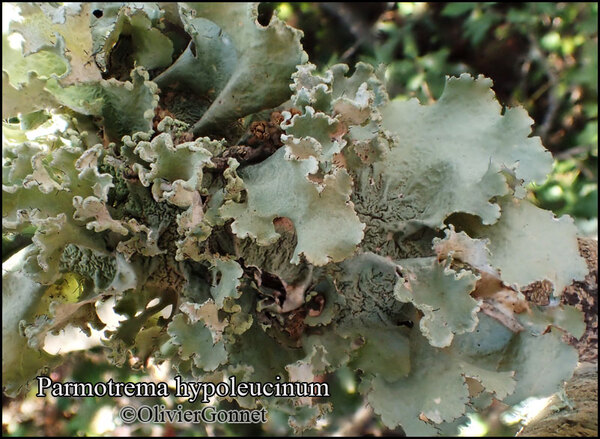Parmotrema hypoleucinum (J. Steiner) Hale
Phytologia, 28: 336, 1974. Basionym: Parmelia hypoleucina J. Steiner - Österr. bot. Z., 67: 282, 1918.
Synonyms: Parmelia gattefossei (M. Choisy) Zahlbr.; Parmelia hypotropa auct. non Nyl.; Parmelia subincana (Maheu & A. Gillet) Maheu & A. Gillet; Parmelia werneri (M. Choisy) Zahlbr.; Parmotrema gattefossei M. Choisy; Parmotrema werneri M. Choisy
Distribution: C - Tosc (Pasquinelli & al. 2009), Laz (Ravera & al. 2003, Massari & Ravera 2002, Ravera 2006c, Munzi & al. 2007, 2013b, Brackel 2015), Sar. S - Camp (Ravera & al. 2018), Pugl (Durini & Medagli 2004, Brackel 2011, Ravera & al. 2020, Gianfreda & Matino 2020), Bas (Potenza & Fascetti 2005, 2012, Fascetti & al. 2006, Potenza 2006, Potenza & al. 2010, Lich. Ital. Exs. 23: Isocrono & al. 2018), Cal (Puntillo 1996), Si (Czeczuga & al. 1999, Caniglia & al. 2005, Caniglia & Grillo 2006b, Cataldo & Ravera 2013b).
Description: Thallus foliose, heteromerous, dorsiventral, very loosely attached, rather rigid, up to 10 cm in diam., sorediate. Lobes irregular, ascending and often forming tufts on small branches, 8-15 mm wide, grey to pale greenish grey with some blackened areas, indistinctly white-maculate, often shallowly reticulate, the margins strongly undulate and often down-turned, with sparse to abundant, up to 4 mm long (but sometimes very short and hardly visible), black cilia. Soralia marginal, linear, rarely extending to the upper surface. Lower surface largely white and erhizinate, black only in central parts, often finely reticulately ridged, with a few scattered, simple, pale to black rhizines. Upper cortex of tightly packed, anticlinally oriented hyphae, with a pored epicortex, the cell walls with lichenan intermediate between the Cetraria- and the Xanthoparmelia-types; medulla white; algal layer continuous. Apothecia lecanorine, not seen in Italian material. Photobiont chlorococcoid. Spot tests: upper cortex K+ yellow, C-, KC-, P- or P+ faintly yellow, UV-; medulla K+ yellow turning orange-brown (sometimes with needle-like red-crystals due to norstictic acid), C-, KC-, P+ orange, UV-. Chemistry: upper cortex with atranorin and chloroatranorin; medulla with stictic acid (major), constictic and norstictic acids (minor).
Note: a Mediterranean-Atlantic lichen (also known from North America) described from Portugal, found on twigs of trees and shrubs in undisturbed Mediterranean maquis vegetation along the coast; exclusively Tyrrhenian in Italy. The identity of all Mediterranean samples is not certain, as the only two European samples (from Spain) which were molecularly analysed by Widhelm & al. (2016) cluster together with the closely related and very similar P. hypotropum (see also note to that species). It is included in the Italian red list of epiphytic lichens as “Near-threatened” (Nascimbene & al. 2013c).
Growth form: Foliose, broad lobed
Substrata: bark
Photobiont: green algae other than Trentepohlia
Reproductive strategy: mainly asexual, by soredia, or soredia-like structures (e.g. blastidia)
Most common in areas with a humid-warm climate (e.g. most of Tyrrenian Italy)
Commonnes-rarity: (info)
Alpine belt: absent
Subalpine belt: absent
Oromediterranean belt: absent
Montane belt: absent
Submediterranean belt: absent
Padanian area: absent
Humid submediterranean belt: extremely rare
Humid mediterranean belt: very rare
Dry mediterranean belt: extremely rare
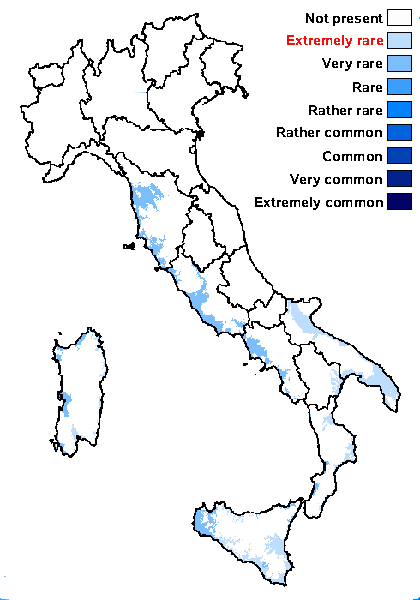
Predictive model
Herbarium samples
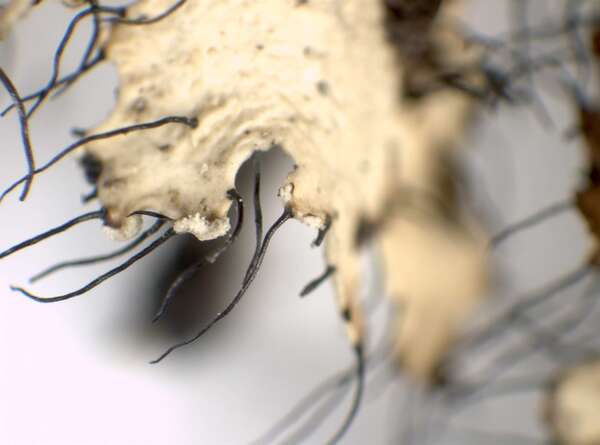

P.L. Nimis; Owner: Department of Life Sciences, University of Trieste
Herbarium: TSB (12306)
2001/11/28
lower surface and soredium
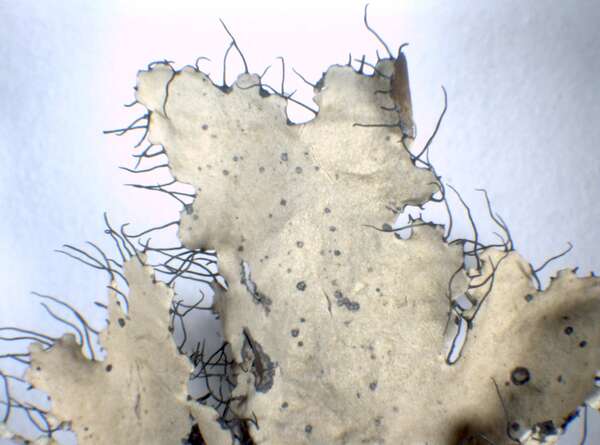

P.L. Nimis; Owner: Department of Life Sciences, University of Trieste
Herbarium: TSB (12306)
2001/11/28
upper surface
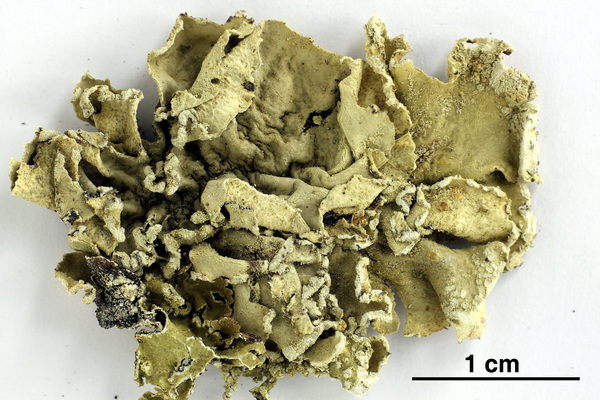

Felix Schumm - CC BY-SA 4.0
[9104], USA, California, Santa Barbara County, on Quercus agrifolia, grounds of Lotusland Botanical Garden, Ashley Rd., Montecito, Santa Barbara. Leg. Shirlea Tucker 04. Jan. 1996 (Nr. 34415), det. S. Tucker.
Growth form: Foliose, broad lobed
Substrata: bark
Photobiont: green algae other than Trentepohlia
Reproductive strategy: mainly asexual, by soredia, or soredia-like structures (e.g. blastidia)
Most common in areas with a humid-warm climate (e.g. most of Tyrrenian Italy)
Commonnes-rarity: (info)
Alpine belt: absent
Subalpine belt: absent
Oromediterranean belt: absent
Montane belt: absent
Submediterranean belt: absent
Padanian area: absent
Humid submediterranean belt: extremely rare
Humid mediterranean belt: very rare
Dry mediterranean belt: extremely rare

Predictive model
| Herbarium samples |


P.L. Nimis; Owner: Department of Life Sciences, University of Trieste
Herbarium: TSB (12306)
2001/11/28
lower surface and soredium


P.L. Nimis; Owner: Department of Life Sciences, University of Trieste
Herbarium: TSB (12306)
2001/11/28
upper surface


 INDEX FUNGORUM
INDEX FUNGORUM
 GBIF
GBIF
